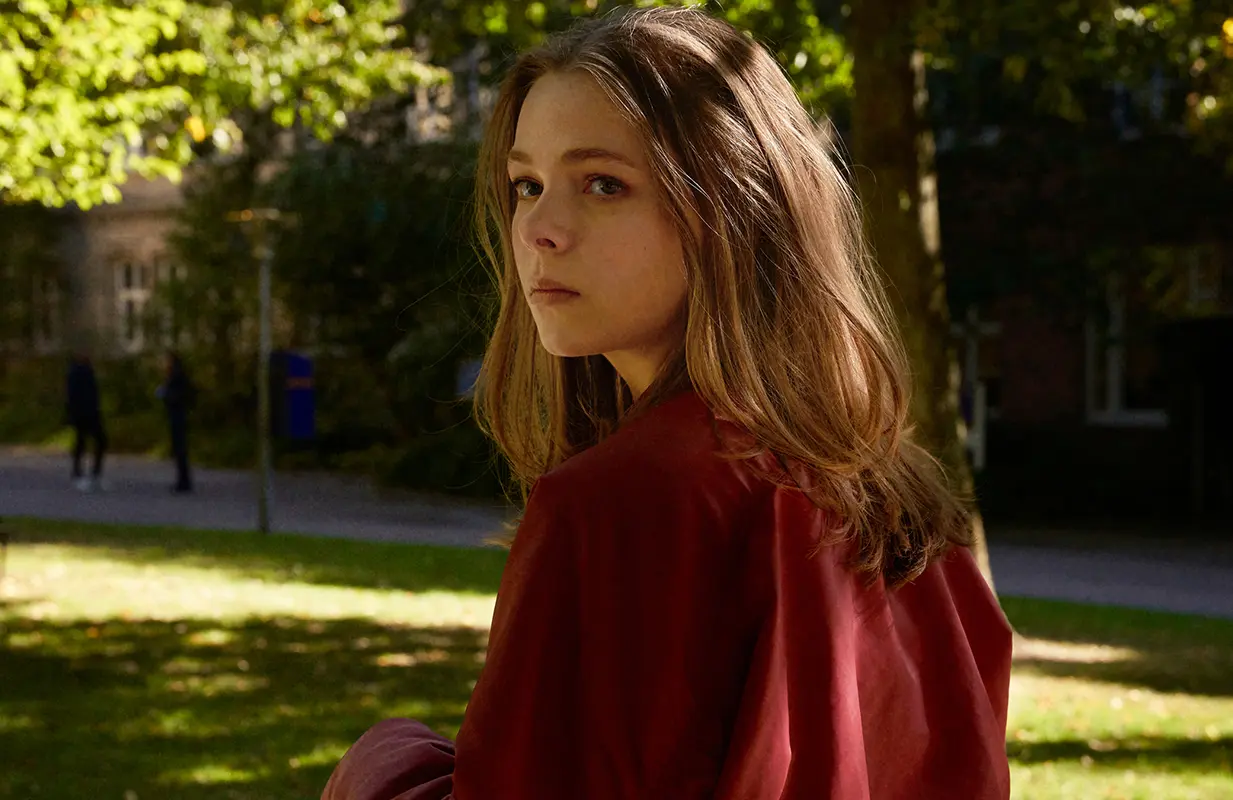A Nearly Normal Family: Netflix Whydunit Is Failproof

Alexandra Karlsson Tyrefors in A Nearly Normal Family (Photo: Netflix)
Poker Face may have brought the howcatchem back into style this year, but over the Thanksgiving holiday, Per Hanefjord’s A Nearly Normal Family made a compelling case for the whydunit.
The Swedish thriller, a suspenseful adaptation of M.T. Edvardsson’s book of the same name, has been making its way up Netflix’s top 10 rankings since its premiere on November 24. And while some of that interest is no doubt the result of long weekend doldrums, even casual viewers will be quickly drawn in by the series’s non-linear storytelling and combination of domestic drama and murder mystery elements.
"Non-linear storytelling and combination of domestic drama and murder mystery elements" could also have been in the log line for The Undoing, which is perhaps the most comparable show. And like that David E. Kelley limited series (an adaptation of Jean Hanff Korelitz's You Should Have Known, a title that really have have prepared audiences for that ending), A Nearly Normal Family deals with the aftermath of a murder, delving into the fissures that develop between its well-off clan. Here, it’s the Sandell family: Adam (Björn Bengtsson), a clergyman in the Swedish city of Lund; his wife, Ulrika (Lo Kauppi), a successful lawyer; and 19-year-old daughter Stella (Alexandra Karlsson Tyrefors), who works at a bakery to save up money to go abroad.
The calm has already been shattered when A Nearly Normal Family begins, as Stella talks to a therapist about being sexually assaulted at age 15. “Chapter One” travels back four years to the handball camp Stella briefly attended, where she met Robin (Christoffer Willén), a camp counselor and upperclassman who takes advantage of their instant attraction and her naivete.
Adam and Ulrika have disparate responses to Stella’s rape: He wants to report the crime, but, as a lawyer, Ulrika knows the depressing realities of the legal system. She warns that it will be Stella’s word against her attacker’s. When Ulrika first talks to her daughter about the attack, she does so primarily as a lawyer, probing the gaps in Stella’s recollection of the events, growing dismayed upon learning she didn’t “fight back.”
Adam and Ulrika’s misguided attempts to protect their daughter color the rest of the six-episode series, which regularly switches perspectives among the family members, sometimes depicting the same events from different vantage points. The Sandells have never really confronted the psychological effects of Stella’s assault; instead of going to therapy, she carries pepper spray. Adam’s guilt over his inaction causes him to still see Stella as a 15-year-old, while Ulrika seems to think she can nag Stella into behaving perfectly, thereby preempting any future attacks or misfortunes.
When Stella is accused of murder just days after her 19th birthday, both Adam and Ulrika try to rectify their past mistakes. Whether or not they’re successful is a matter that remains up in the air, just like what really happened the night that Christoffer Olsen (Christian Fandango Sundgren) was killed.
Ambiguity persists throughout this series, by design and to great effect. Hanefjord’s deliberate direction establishes the “near-normalcy” of this family early on, while also drawing out the suspense. As the series unfolds, that same steadiness will make you question what you’re watching and have already seen more than any fancy camera tricks or rug pulls could. There are multiple unreliable narrators here, just like in the book, and so Hanefjord and screenwriters Anna Platt and Hans Jörnlind present everyone’s retelling in the same fashion, with a few loose ends and reasons to lie.
But A Nearly Normal Family isn’t exactly withholding. Before laying out the events of that fateful night in the finale, “Chapter Six,” the series has already provided enough clues to guess the killer’s identity — it’s the motive that remains unclear. The final scene is illuminating, but it stops short of connecting all of the dots. Blame isn’t the province of the whydunit, after all.
Maintaining that ambiguity is key to foolproofing the show’s ending. Despite the fact that the book’s plot is readily accessible — along with many other domestic TV thrillers, including The Undoing — and the usual suspects have already rolled out the explainers, A Nearly Normal Family still demands to be seen, and its conclusion grappled with.
Danette Chavez is the Editor-in-Chief of Primetimer and its biggest fan of puns.
ncG1vNJzZmivp6x7sb7IppytoZ2av2%2BvzqZmqq2ZmLiptdOsZpplnpqus7jYZqWoqp2WuW6ywKagpbFdo7K1ssuir2alqajBpr7YZquhqpmhuaa%2BjJ6lnaGenHq4tNidrKehpA%3D%3D